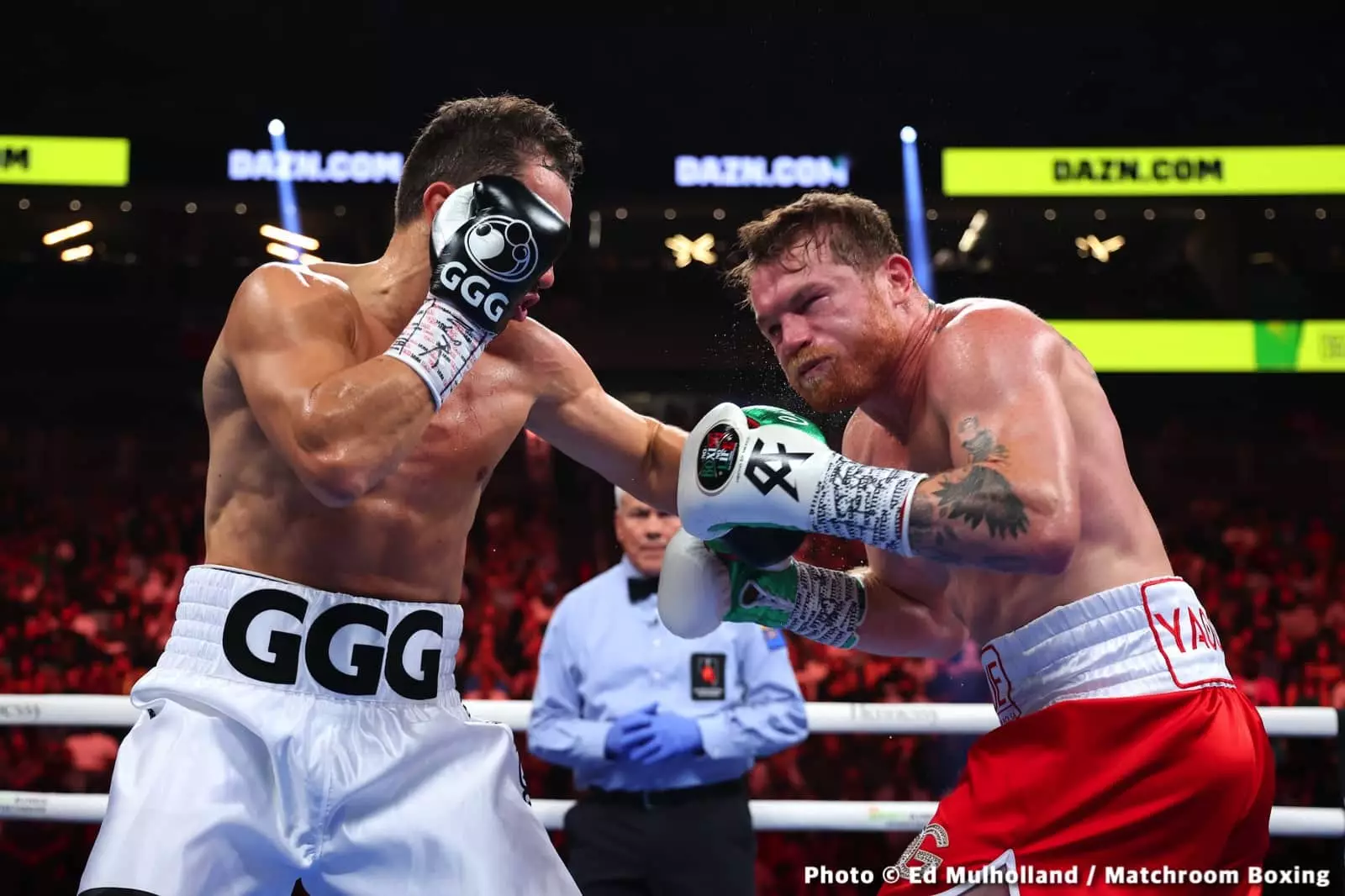In the world of boxing, prestige often hinges on perceptions of power, resilience, and tactical mastery. When fans and analysts recognize fighters like Gennadiy Golovkin, they often attribute to him a near-supernatural ability to neutralize opponents through sheer strength and relentless pressure. But is this reputation built on genuine superiority, or is it an embellished narrative? Contemporary trainers like Abel Sanchez argue that Crawford’s technical skill and pride might not suffice against a puncher of Canelo Alvarez’s caliber, especially given the differences in power and body strength. This perspective offers a vital insight: in boxing, psychological confidence and technical agility are insufficient unless paired with demonstrable physical dominance.
It’s worth questioning whether Crawford’s skillset alone can match Canelo’s destructive punch—an assertion Sanchez emphasizes vehemently. While Crawford exudes finesse, speed, and tactical intelligence, the argument is that these attributes require operational backing through physical power to be truly effective against someone like Canelo. The notion that a fighter’s technical brilliance can compensate for a lack of knockout power is often romanticized, but history and science suggest otherwise. Power is the currency that forces opponents on their heels; without it, even the most skilled fighters might find their best efforts neutralized by a more physically imposing adversary.
Body Composition and the Myth of Rapid Strength Acquisition
One of the recurring themes in Sanchez’s critique involves Crawford’s body development—or lack thereof—for the higher weight classes. His comments imply that power is not solely about technique but also about muscular strength and endurance built over time. Jumping from welterweight to super middleweight or even light heavyweight isn’t simply a matter of gaining mass; it demands meticulous physical training and body transformation that Crawford, at this point, might not have fully achieved.
The issue at stake isn’t just about weight, but about the quality of that weight—muscle, bone density, and resilience—that influence punching power. Sanchez notes that Crawford’s recent performances at 154 pounds didn’t demonstrate significant power, which raises questions about his ability to carry power upward as he ascends divisions. Rushing into a big fight without proper body adaptation risks undermining his performance, especially against a puncher like Canelo, who thrives on exploiting openings created by overconfidence or physical shortcomings.
Furthermore, the transition between divisions isn’t seamless. It’s a process that involves not only gaining weight but also reinvesting in strength training, conditioning, and skill refinement in a manner that complements the added mass. Crawford’s rapid ascension, bypassing tune-up fights and physical maturation, might backfire, depriving him of the crucial time needed to develop the requisite durability.
Golovkin vs. Crawford: A Tale of Power and Presence
Trainer Abel Sanchez’s comparison between Golovkin and Crawford is illuminating. Golovkin’s reputation isn’t solely based on technique; it’s rooted in his terrifying punching power and ability to impose his will physically. His jabs and power punches serve as weapons that keep opponents at bay, disrupting their rhythm, and creating openings for his devastating crosses.
Crawford, in contrast, operates differently. His mastery lies in speed, technical refinement, and counterpunching—a finesse game that relies on outsmarting opponents rather than overpowering them. Sanchez insists that Crawford simply doesn’t possess Golovkin’s knockout punch or physical presence at middleweight or super middleweight levels. This isn’t a mere matter of opinion; it is rooted in observable performance patterns. Despite his impressive record, Crawford’s lack of notable knockout power beyond welterweight underscores the challenge he faces in trying to emulate GGG’s style against a power puncher like Canelo.
It’s tempting to believe that a talented fighter can adapt and overcome any obstacle. But Sanchez’s insight suggests that certain physical attributes—like GGG’s raw strength and power—are intrinsic and irreplaceable. Without that, Crawford’s tactical advantages may fall short when confronted with Canelo’s formidable punching arsenal.
Is the Rising Weight Class a Shortcut or a Risk?
The decision of Crawford to move up divisions and forego tune-up fights might appear strategic but carries significant risks. Bulking up rapidly without a solid foundation of strength and conditioning is akin to building a house on unstable ground. Sanchez implies that Crawford’s current physique is not yet equipped to handle the rigors of fighting at 168 pounds with the power and resilience needed to withstand Canelo’s punches.
This isn’t just a physical concern; it’s a psychological one. Entering a fight believing in one’s skill but lacking the requisite body strength can lead to overconfidence, lazy defenses, or critical openings. Canelo’s style capitalizes on opponents’ mistakes, and a fighter who doesn’t fully understand the physical toll of the weight jump might be prone to making those costly errors.
Additionally, Sanchez’s remark about Crawford not having the power to fight “another GGG” highlights a broader truth about boxing: the disparity between skill and raw physicality is vast. While Crawford’s speed and tactical ingenuity make him a formidable opponent, they cannot fundamentally replace the threat of genuine power. Without it, Crawford risks becoming another highly skilled but ultimately vulnerable fighter who can be outgunned by a physically superior adversary.
In essence, Crawford’s RUSH to big fights might be more a gamble than a strategic move. The absence of adequate physical preparation and the reliance on technical finesse alone may not suffice in a high-stakes contest against a puncher like Canelo. If history has taught us anything, it’s that boxing championships are often decided not just by skill, but by strength, resilience, and the ability to withstand and punish.
This fight isn’t merely about technique; it’s a contest of physical dominance, mental resilience, and tactical discipline. As Sanchez reminds us, boxing is as much about how much you can hurt your opponent as it is about how clever you are in the ring. Without the power to back up finesse, even the most talented fighters can find themselves overmatched against a true heavyweight in the art of destruction.

